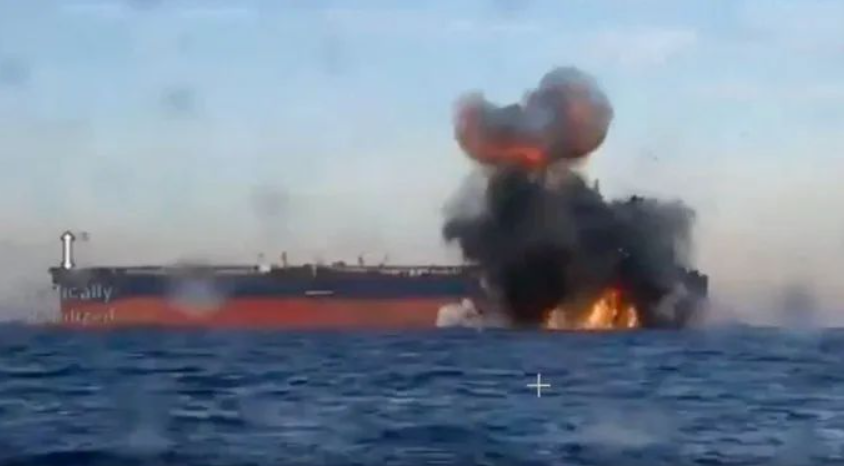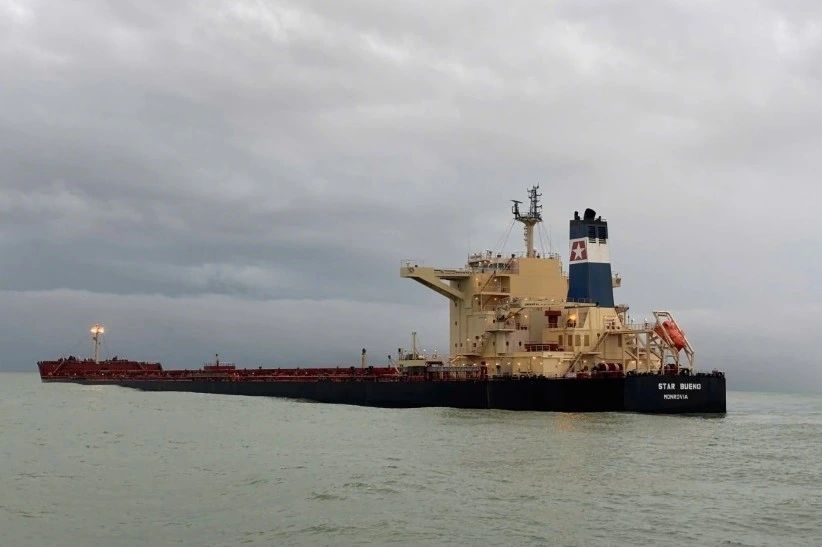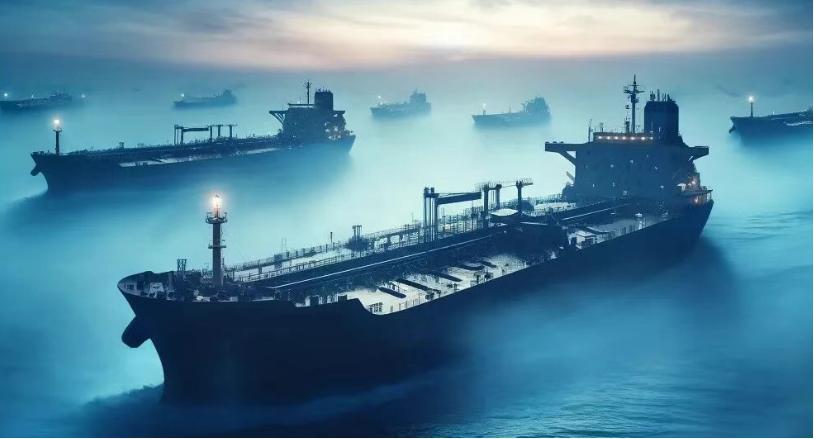
The Global Centre for Maritime Decarbonisation has successfully completed the world’s first maritime pilot demonstrating the full value chain of onboard captured carbon dioxide (CO2) in China on 25 June 2025.
The pilot encompassed two phases. In the first phase, Shanghai Qiyao Environmental Technology Co., Ltd. (SMDERI-QET) conducted a ship-to-ship (STS) transfer of 25.44 metric tons (MT) of captured CO2 from the container vessel MV Ever Top to the receiving vessel Dejin 26. The CO2 was subsequently offloaded from Dejin 26 to a tank truck at a jetty in Zhoushan, Zhejiang Province.
The second phase, led by GCMD, involved transporting the captured CO2 to its enduse destination: a joint venture plant between GreenOre and Baotou Steel in Inner Mongolia. There, the LCO2 was successfully used in the production of low-carbon calcium carbonate, a key component in sustainable construction materials.
This cross-sectoral demonstration highlights how captured CO2 from ships can be repurposed for industrial applications, linking maritime decarbonisation efforts with broader land-based carbon ecosystem.
Significance of the pilot in unlocking the carbon value chain
Advancing maritime decarbonisation at scale requires more than just capturing carbon. It is also essential to address the fate of the captured and offloaded CO2 by establishing a full carbon value chain, including the downstream infrastructure to offload, transport, store and use captured CO2 meaningfully.
Using captured CO2 in concrete production offers one of the higher GHG emissions savings among current utilisation pathways, as it partially displaces the need for carbon-intensive cement production ashore. This finding is based on GCMD’s COLOSSUS study, which evaluated life cycle emissions of onboard captured CO2 across various sequestration and utilisation pathways.
Pilot conducted under real-world constraints
As a first-of-its-kind pilot, this project served as a valuable learning experience, helping to uncover real-world challenges that must be addressed to enable the scalable implementation of onboard carbon capture.
A key challenge was the classification of captured CO2. Designated as “hazardous waste” prohibits its reuse and mandates disposal. Through close coordination with the relevant authorities, the captured CO2 in this pilot was redesignated as “hazardous cargo,” lifting these restrictions and enabling its use as an industrial feedstock.
For the pilot, GCMD also identified and brought together stakeholders across the value chain—including a like-minded end user willing to evaluate onboard captured CO2 as its feedstock. With its facility located in Inner Mongolia, the captured CO2 was transported over 2,000 km as a first demonstration in its industrial reuse.
Broad ecosystem support
The pilot involved close collaboration with multiple stakeholders across the value chain, including vessel owner Evergreen Marine Corp, OCCS provider SMDERI-QET, STS service provider Dejin Shipping, and industrial plant operator GreenOre and its joint venture, Baorong Environmental Co. Ltd. Port authorities and regulators, namely Shanghai Municipal Transportation Commission (SMTC), Shanghai Maritime Safety Administration (SMSA), Shanghai International Port Group (SIPG), Shanghai Customs, and Shanghai Border Inspection also supported the pilot.
Beyond the pilot
GCMD will conduct a comprehensive LCA to quantify GHG emissions for this pilot with CO2 quality and quantity data obtained through sampling activities conducted throughout the pilot. GCMD will work with DNV for third-party verification of emissions reduction claims under recognised accounting frameworks.
Professor Lynn Loo, CEO of GCMD, said, “We are proud to leverage our role as a neutral convener to bring together stakeholders from various sectors to address the technical and operational challenges of offloading and utilisation of CO2 captured onboard vessels. This pilot marks a major step in demonstrating how onboard captured CO2 can be integrated into the broader circular economy. With a rigorous life cycle assessment underway, we are quantifying the climate impact across the entire value chain to show how OCCS can serve as a meaningful decarbonisation lever—when applied thoughtfully and transparently.
Dr. Su Yi, General Manager of SMDERI-QET, said, “As the developer of the world’s first complete OCCS process, we are honoured to collaborate with all parties in the successful completion of the world’s first ship-to-ship transfer of LCO2. Since the delivery of the first full-process OCCS in early 2024, we have executed two successful ship-to-shore unloading operations and achieved the world’s first CII deduction for vessels. From ship-to-shore unloading to ship-to ship transfer, we are confident that this milestone – coupled with further advancements in OCCS - will not only accelerate the development of a global network for shore-based carbon storage and utilisation facilities, but also advance the decarbonisation of the shipping industry.”
Tracy Chen, Senior Vice President of GREENORE, said: “We are honoured to serve as the end user of the onboard captured liquefied CO2 in this initiative led by GCMD. By converting the LCO2 into high-purity, green calcium carbonate, we have helped complete the carbon value chain in this pilot. GREENORE is committed to driving substantial reductions in shipping emissions. In the future, with the launch of GREENORE’s coastal mineralisation projects, onboard captured LCO2 can be locally utilised and stored—enabling meaningful emissions abatement and supporting the maritime sector’s transition to net-zero.”
source: GCMD
source: GCMD
The opinions expressed herein are the author's and not necessarily those of The Xinde Marine News.
Please Contact Us at:
media@xindemarine.com






